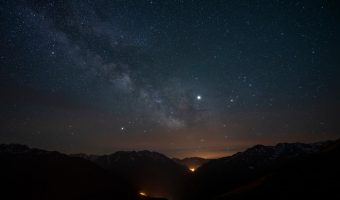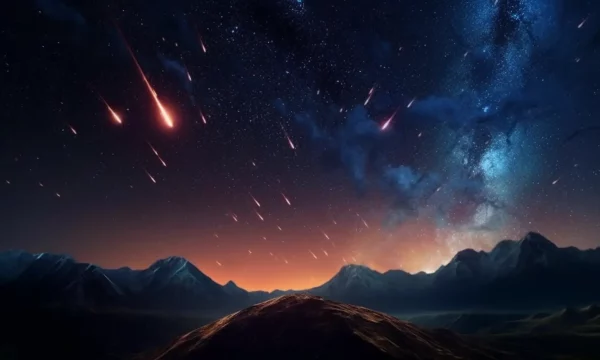
What is a Shooting Star? Facts & Explanations
Last Updated: October 3, 2023
One of the most beautiful aspects of astronomy and stargazing is looking up to see shooting stars (sometimes referred to as falling stars) flying across the night sky. The sense of wonder and excitement you get from witnessing them is second to none. However, these colourful trails of light are the result of a phenomenon that has nothing to do with the stars! Let’s find out more about this spectacular celestial phenomenon.
What causes shooting stars?
Shooting stars are glowing streaks of light produced by small pieces of space rock and dust when they enter the atmosphere at high speed. These meteoroids come from asteroids and comets – pieces of space rock that floats about in between the planets and orbit the sun with them.
During their journey, some pieces of rock and dust break off from them due to changes in temperature as they get closer and further from the Sun. Occasionally, some of these rocks are flung toward the Earth and enter its atmosphere.
While the smaller meteoroids will burn at high altitudes in the atmosphere, the larger and heavier ones contain a large core made of iron which cannot be vaporized by atmospheric friction (also known as atmospheric drag). They land on the surface and form craters… these are classified as meteorites.
The first kind, the micrometeoroids, are the ones that amateur astronomers most look forward to admiring. When these space rocks enter the atmosphere, they leave bright streaks in their wake as they burn up in the night sky.
While more than 25 million such micrometeoroids enter Earth’s atmosphere every single day, the most prominent ones occur when Earth’s orbit around the Sun intersects a comet’s orbit. These are predictable regions in space where “meteor showers” take place in the sky. Some of the most intense meteor showers can produce 100 shooting stars in less than an hour!
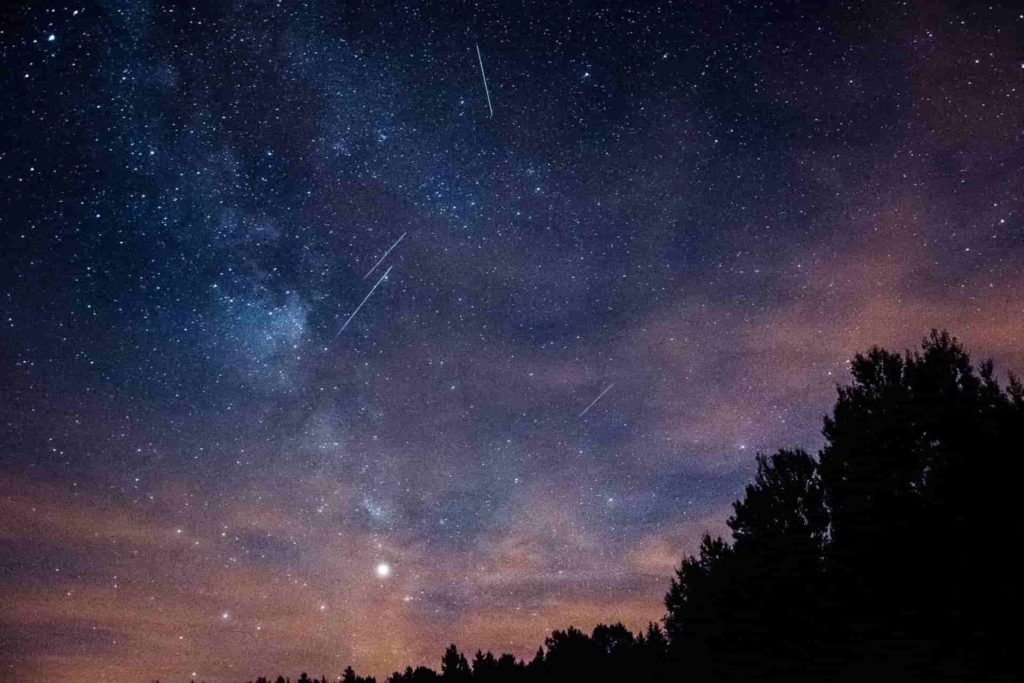
Small meteors entering the atmosphere at high speed causes the streaks of light known as shooting stars.
What are meteorites made of?
Meteorites are mostly made of iron, nickel and silicates (oxygen and silicon). The kind of classification that a particular meteorite falls under depends on which of the chemicals is dominant in the meteorite:
- Iron meteorites: they are almost 100% made of metal.
- Stony-iron meteorites: they are made up of an almost equal amount of silicate and metal
- Stony meteorites: they are mainly composed of silicate and a small amount of metal
Related article: From Fireballs to Iron Meteors: Exploring the Different Types of Meteorites
What color are shooting stars?
If you have ever observed shooting stars, you may have noticed that some meteors emit different colors as they pass through the atmosphere. These colors are the result of the intense heat generated by the friction between the high-speed meteors and the gases that make up the atmosphere. The chemicals in the meteors are vaporized by this heat, as are some of the gases (such as nitrogen and oxygen), and the energy emitted by this interaction results in a flash of colored light.
In addition to these gases, the velocity and the angle at which the metoroids are falling can also influence the color and the brightness of that shooting star.
If you are a regular stargazer, you can expect to see shooting stars of the following colors:
- White: Most shooting stars appear white or yellow due to the intense heat causing the meteor to glow as it burns up in the atmosphere.
- Green: The green color of some shooting stars is caused by the abundance of magnesium in the meteor. Magnesium is heated and ionized by the intense friction with the Earth’s atmosphere, and it emits light in the green part of the spectrum.
- Red: Red shooting stars are due to the presence of molecules in the Earth’s atmosphere that emit light in the red part of the spectrum. These molecules excite and ionize the atoms in the meteor, causing it to glow red.
- Blue: Blue shooting stars are relatively rare, but they can be caused by the presence of copper in the meteor. They require very high speed to happen.
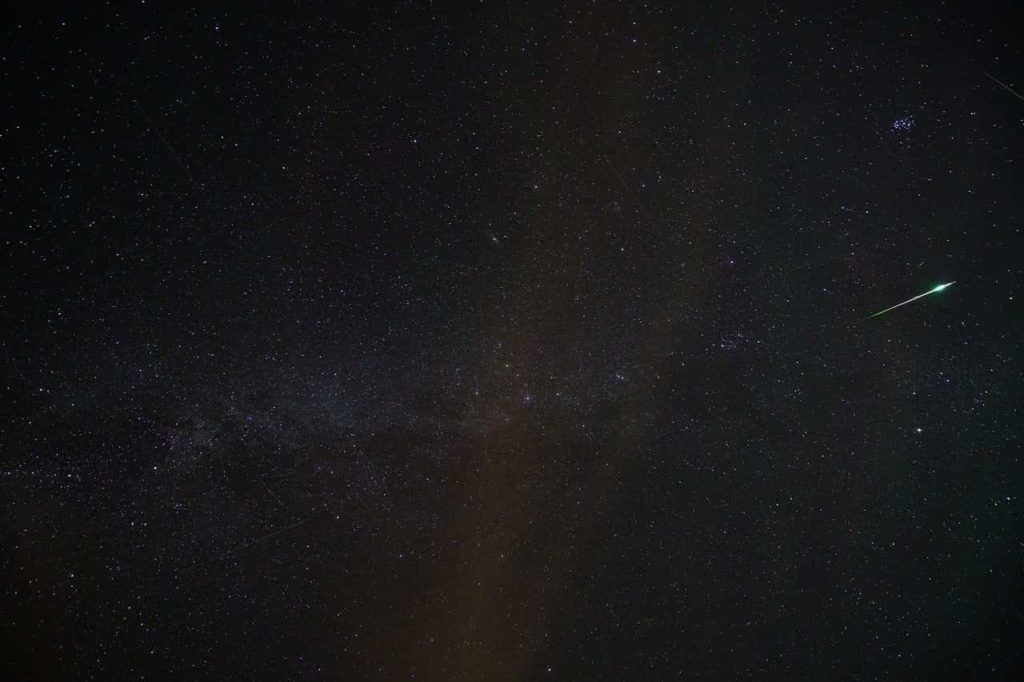
This bright meteoric fireball from the annual Geminid meteor shower has a green hue.
How rare is it to see a shooting star?
The frequency at which you can see a shooting star, or meteor, depends on various factors such as your location, the time of year, light pollution, and weather conditions. On an average night with clear skies and minimal light pollution, you might see a few meteors per hour.
Contrary to popular belief, shooting stars are not as rare as one might assume. Their fleeting nature makes them difficult to observe, and the presence of light pollution further complicates their observation.
We know that shooting stars occur mainly because the orbit of the Earth leads it to cross fields of rocky debris, which result in meteor showers. There are therefore two types of shooting star events that we can classify. The first is the predictable showers, such as the Leonids, Perseids, etc., which occur every year at the same time.
The second category is the undocumented meteorites that enter the Earth’s atmosphere outside of the annual meteor showers. Occasionally, a stray meteorite may be hurled toward Earth by the gas giants (Jupiter or Saturn) or be attracted by Earth’s gravity. In any case, seeing a dozen shooting stars every night is perfectly normal.
In total, there are 6 major meteor showers each year and it is very easy to predict their observation.
Can a shooting star hit the Earth surface?
It is entirely possible for a shooting star to land on the surface of the Earth and it happens quite often. Meteoroids begin to evaporate as soon as they enter the atmosphere, and most of them disintegrate completely several kilometers above the Earth’s surface.
But iron, which forms the core of the most massive meteoroids, requires more time and higher temperatures to burn up completely. Because the largest meteoroids have a much higher meteoric iron content, they are more likely to impact the Earth’s surface. There are about 500 of these per year.
What to do if you find a meteorite on the ground
Picture this: you’re enjoying a live meteor shower with your special person during a romantic stargazing date. On the way back to the car, you notice a little black patch on the grass… it’s a meteor!
Now you’re thinking, this little piece of rock detached itself from an asteroid, floated in space for god knows how long, survived the scorching re-entry through our atmosphere to then land on the ground near you. What are the odds, right?
What’s next? Well, it’s entirely up to you really. First you might want to do some preliminary test to identify this potential meteor. If you’re sure it is not a meteor wrong, then you have a few options:
- You opt to keep it confidential and take pride in displaying your exceptionally uncommon celestial stone within your household.
- You decide to sell the meteorite. However, it’s important to note that in many countries there are restrictions on owning, collecting, or selling meteorites, so you may want to research your country’s laws before making that decision.
- Another option could be to donate the meteorite to a scientific institution or research organization. By doing this, you would be contributing to the scientific community’s understanding of our solar system and the origins of the universe
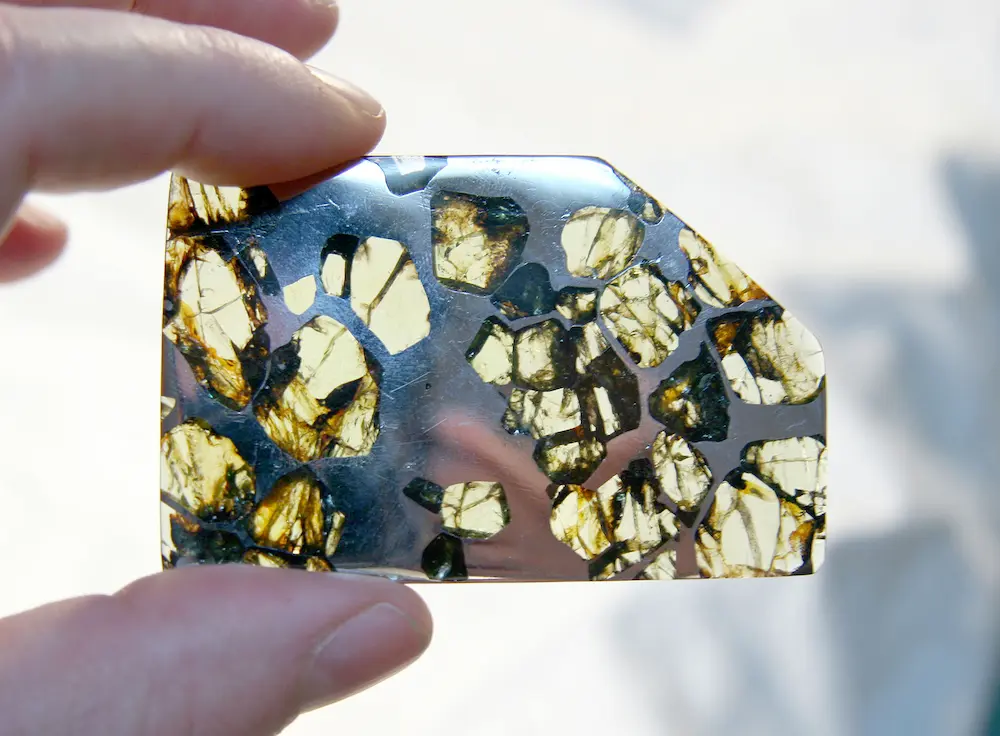
Has a shooting star ever hit someone?
The chances of a meteorite (shooting star) striking a person are extremely low, but there is one documented case. Let’s travel back to 1954 when a woman named Ann Hodges experienced an unimaginable encounter in Sylacauga, Alabama, USA. While peacefully dozing off on her couch, Ann was struck by a meteorite—a true one-in-a-million occurrence.
This particular space rock was roughly the size of a grapefruit and had an unexpected trajectory. Initially bouncing off a radio, it found its way to Ann, leaving her with severe bruises. Remarkably, she survived this extraordinary incident.
Because the Earth’s surface is about 70% water, and because many land areas are sparsely populated, most meteorites will fall without hitting people or damaging buildings. As we’ve mentioned before, the Earth’s atmosphere burns up most smaller meteorites before they can reach the ground.
How to observe a shooting star?
Since major meteor showers occur at predictable times relative to the Earth’s orbit, it is possible to plan a shooting star observation.
The first step, of course, is to go somewhere dark enough to see the shooting stars. If you live in a big city, you should consider going to the suburbs to avoid urban light pollution. A place that is dark enough will allow you to observe the brightest meteorites and distinguish the colors of their light trails.
The second step is to determine which direction to look. This depends on the meteor shower you plan to observe. You need to determine its “radiant point”. For example, the Perseids’ radiant point is in the constellation of Perseus. This is where the meteor shower comes from.
The third step is to figure out when you will be able to see the most shooting stars so that you can get the most out of the experience. To do this, you will need to determine when the peak activity will occur. The Perseids, for example, have a week-long peak of activity, so you can observe them any night around midnight.
Finally, using a stargazing app will go a long way in helping you accomplish the above three steps and plan your shooting star party!
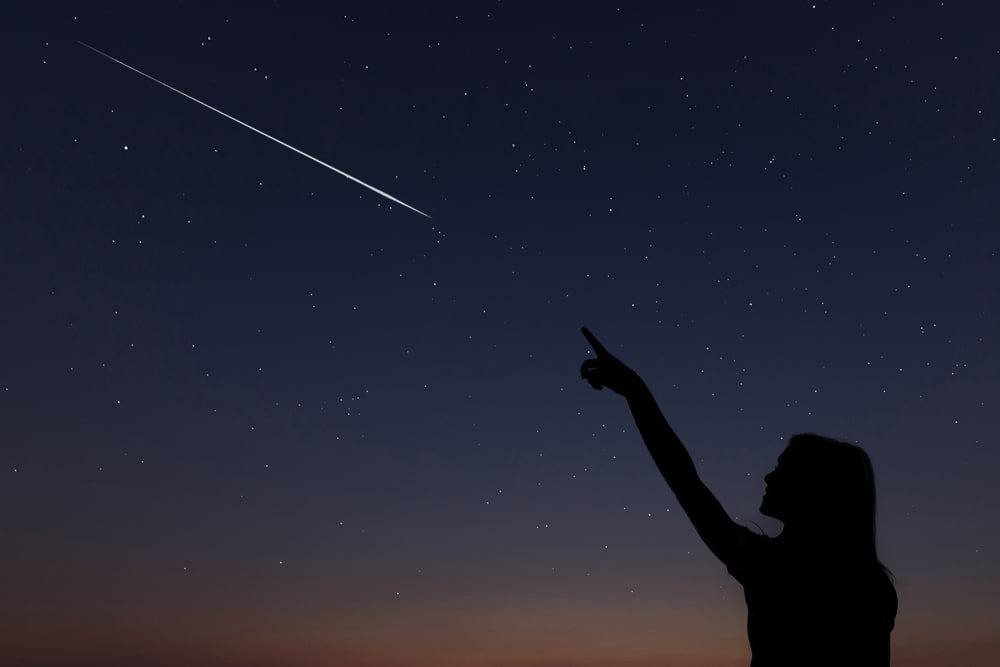
Meteor showers offer the best opportunities to see many shooting stars.
Falling star symbolism in different cultures
Shooting stars have been occurring since the creation of the Earth. Therefore, it is not surprising that they have been perceived as both fascinating and strange phenomena by ancient civilizations. They tried to understand this celestial phenomenon, which led to a variety of interpretations among different cultures.
For example, the famous Greek astronomer Ptolemy declared that shooting stars were in fact the gods trying to open the sky to see what was happening on Earth. People then began to believe that an open sky meant that the gods were more likely to listen to their wishes and grant them. For this reason, it was also considered impolite to point at shooting stars, as it might offend the gods.
Another famous symbolization that is prevalent in many cultures is that shooting stars are the representation of falling souls. That is, after death, a person’s soul is released and he or she can rejoin the firmament.
List of the major meteor showers that can be seen each year
Meteor showers are a phenomenon that occurs when our planet passes through a field of meteorites left by comets as they travel around the sun. As the Earth circles the Sun each year, it repeatedly encounters the same meteorite fields, which explains why these major meteor showers occur at the same time every year.
| Name | Constellation | Zenithal hourly rate (ZHR) | Time of year |
|---|---|---|---|
| Lyrids | Lyra | 20 meteors per hour | From April 14th to 30th |
| Eta Aquarids | Aquarius | 10 to 20 meteors per hour | From April 19th to May 28th |
| Perseids | Perseus | 120 meteors per hour | From July 17th to August 24th |
| Orionid | Orion | 20 meteors per hour | From October 2nd to November 7th |
| Leonids | Leo | 100 meteors per hour | From November 6th to 30th |
| Geminid | Gemini | 50 meteors per hour | From December 7th to 17th |

I’ve been fascinated by space and astronomy from a very young age. When I’m not watching space-themed documentaries, movies or TV series, I spend most of my free time in my backyard admiring the planets and galaxies with my telescope.
Wow! There's more to read 🚀
This page is part of our collection of articles about astronomy. If you enjoyed the read, then you’ll love the following articles.
When you look up into the night sky, you might have noticed that not all the stars shine equally. Learn how to recognize the brightest stars.
Observing the night sky fills me with a sense of amazement and I hope these beautiful quotes about the stars will make you feel the same way.
When light from a given star has taken as long as your lifetime to reach our planet, it is called a “birthday star”.

